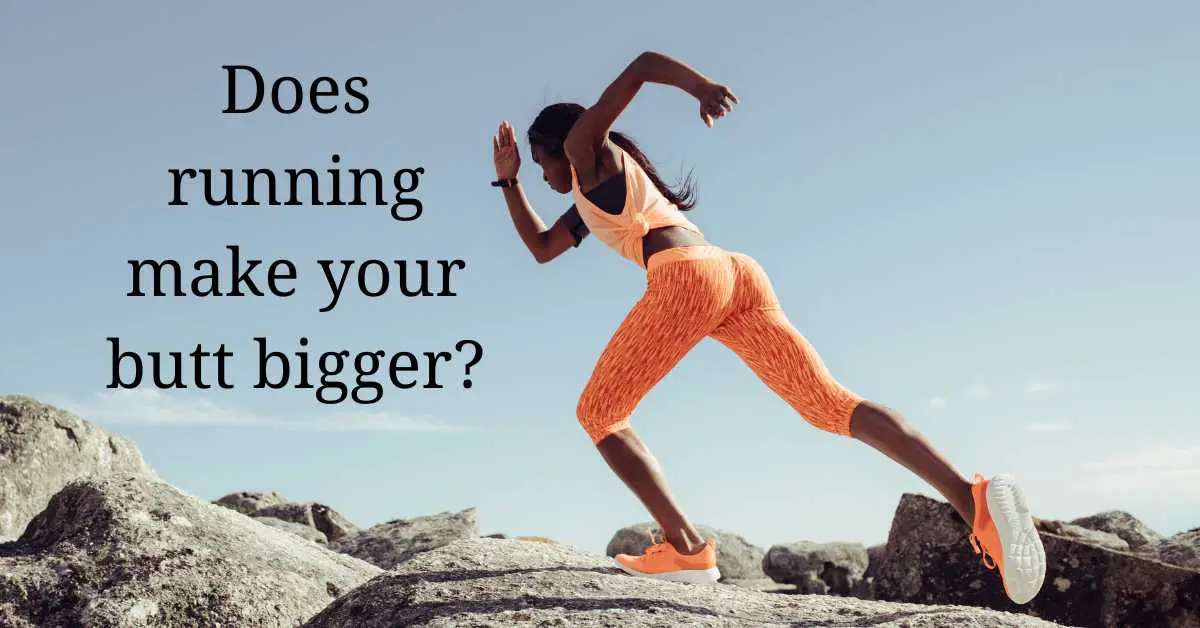Are you curious about whether running can make your butt bigger or smaller? It’s a question that many people have asked, and it’s easy to see why – we all want to achieve our fitness goals while also feeling confident about our bodies. There are different opinions out there, with some claiming that running can give you a more toned, shapely butt, while others argue it can actually lead to a smaller behind.
In this article, we’ll delve into the science behind this topic to help you understand, Does Running Make Your Butt Bigger or Smaller?
So, let’s lace up our shoes and get ready to explore the truth about running and your butt!
Does Running Make Your Butt Bigger or Does Running Make Your Butt Smaller?
One of the most common questions that runners get asked is “why do sprinters have big butts?”
The answer to this question lies in the biomechanics of running. When running, you use your legs to push yourself forward, and you use your glutes (butt muscles) to help with that propulsion. A sprinter has much more need for power than a long-distance runner, so they’re going to develop more muscle mass in those areas.
Long-distance runners, on the other hand, need less power and more endurance. They’ll develop more muscle mass in their legs to help with their endurance.
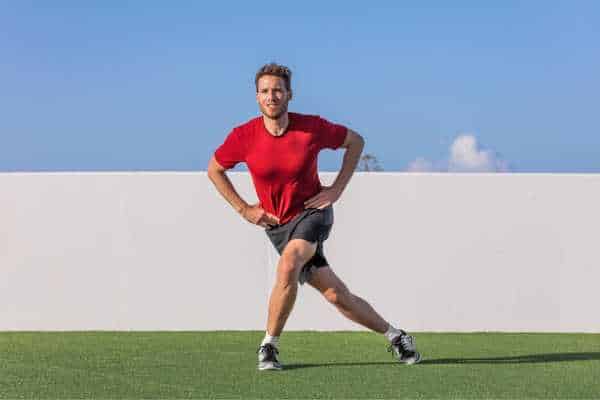
How The Type of Running You Do Affects Your Butt
Running is one of the best ways to stay fit and healthy. It’s also a great way to tone your butt!
When you run, you’re engaging all the muscles in your lower body—and one of those muscles is called the gluteus maximus. The more you work that muscle, the more toned it gets. And when you have a toned gluteus maximus, it means that your butt will look good and feel good too!
But not all running is created equal—there are different types of running that work different parts of your body, and some may be better than others for getting a nice butt. Here are a few options:
-Running on the treadmill: This is an excellent way to build endurance and strength throughout your entire lower body. The key here is to keep moving forward at a steady pace without going too fast or too slow; maintaining this speed will make sure you get maximum results from your workout.
-Running on trails: If you really want to tone up those glutes, try running through some trails! Not only will this give you an extra challenge during each run; but it’ll also help with muscle growth as well as fat loss. Not to mention that hiking can be good for mental health too!
How Distance Running Affects Your Butt Muscles
Distance running is a great way to burn some extra calories, but it can also have a negative effect on your butt muscles.
This is because the gluteus maximus, one of the largest muscles in your body and primarily responsible for hip extension (standing up from a seated position) is not used when running long distances. This means that as you run farther and farther, your butt muscles start to atrophy.
However, if you are interested in maintaining or increasing your butt size while continuing to run, there are some exercises you can do at home that will help you build up those muscles while still getting your workout in!
Long-Distance Running vs. Sprinting
If you’re interested in having a bigger butt, you may wonder which type of exercise is best for building it up: sprinting or long-distance running?
The answer is both. For maximum results, you should do both.
Long-Distance Running
Long-distance running can help build up your glute muscles and increase their size. This is because it helps build stamina, which will help you maintain good form while running longer distances. In addition, it helps burn fat and improve cardiovascular performance.
However, if you want to only focus on one type of exercise for your butt, then long-distance running may be the best option for you. This is because the glutes are worked more when running long distances than they are when sprinting.
Sprints
Sprinting also works your glutes by increasing strength and power in this area of the body. Sprints also increase metabolism by burning more calories than walking does (which means less body fat!). The increased leg speed that comes with sprinting helps strengthen muscles as well as increase their size over time (which means bigger butts!). While sprinting might not seem like a great way to build glutes, it actually is! Sprinting will increase your metabolism, which will help you burn more calories overall. This means less body fat and a smaller waistline!
Type l Muscle Fibers
Type l muscle fibers are also called slow-twitch fibers. They are designed to use oxygen to generate energy and are used for endurance activities. They can contract for a longer period of time than fast-twitch muscle fibers.
They are good for swimming, cross-country skiing, endurance running, and cycling.
Type II Muscle Fibers
Type II muscle fibers are also called fast-twitch muscle fibers and they make up about 90% of a person’s total muscle fiber count. They are used for rapid movements and quick bursts of energy, such as sprinting or jumping.
Type II muscle fibers contract faster than type I muscle fibers (slow twitch fibers), but they also fatigue quickly because they use anaerobic metabolism to produce ATP (adenosine triphosphate). This process creates lactic acid, which causes pain during prolonged activity.
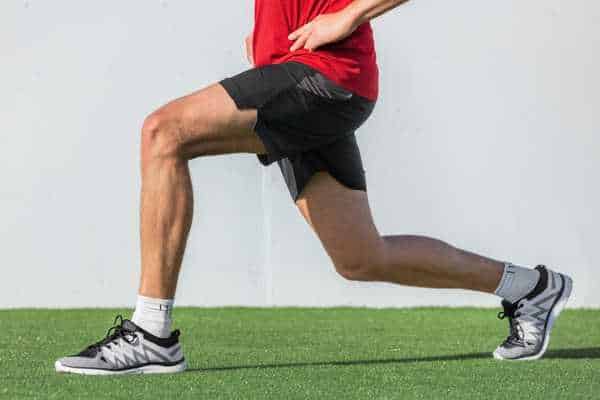
What Kind of Running Makes Your Butt Bigger?
How running makes your butt bigger is a question that has plagued the fitness industry for years. Many experts believe that running, when done correctly, can lead to better body composition. However, this only applies to certain types of running.
Running on a treadmill is not as effective at building muscle mass in the gluteus maximus as running outside. The reason for this is that the treadmill does not provide any resistance or short bursts to the runner’s movement, whereas running outside does.
The more resistance there is on the muscle during exercise, the more likely it is that that muscle will grow. In other words: The harder you work out, the bigger your butt will get!
The next time you decide to go for a run, make sure it’s outdoors and long enough so that your legs start burning! Don’t forget to include a few hill sprints for added resistance training.
How Running Tones Your Booty
Running is an amazing way to tone your booty.
Your butt muscles are made up of three different layers: superficial, deep, and gluteus maximus.
The superficial layer is mostly made up of muscle fibers that contract when you move quickly or in a jerky way, like when you run.
The deeper layer consists of slow-twitch muscle fibers that contract when you’re doing low-intensity exercises like walking or jogging.
And the gluteus maximus is the largest muscle in your body and helps support your spine and pelvis during running.
Running not only strengthens these muscles but also improves their endurance and elasticity. This means that they’ll be able to do more work before getting tired out—which means stronger more toned glutes!
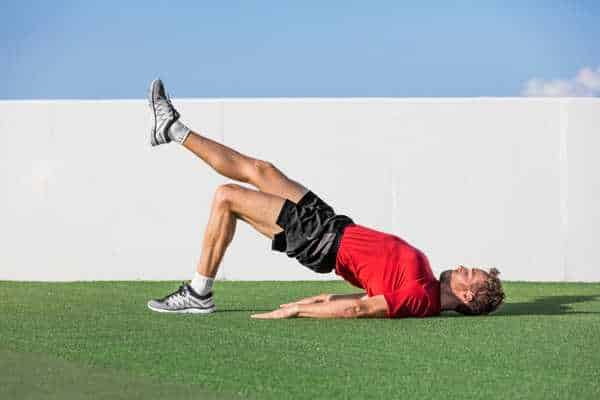
Sprinting For A Bigger Butt
Sprinting is a great way to get a bigger butt.
If you’re looking for a way to get a bigger bum, try sprinting! Sprinting is an intense cardio workout that will burn calories and help you tone up your butt. The more muscles you use in your body, the more calories you’ll burn—which means that if you include sprints in your workout routine, the more calories you’ll burn all over.
Sprinting also increases circulation, which can help improve blood flow through your body and oxygenate muscles better than walking or jogging would. This helps increase muscle tone and reduce cellulite, so it’s an easy way to get rid of any “lumps” in your butt area.
If you want to build a bigger booty by sprinting, here are some tips:
-Start off slow and build up your speed over time
-Keep good form at all times (this means keeping your back straight while running)
Which Muscles Does Running Work On?
Running is a great way to get in shape, but it can be hard to know which muscles you’re actually working on. Here’s a breakdown of what running works on:
Quadriceps
The quadriceps, or thigh muscle, is one of the largest muscles in your body. When you run, you’re using this muscle for every step you take—whether it’s a short stride or a long stride.
Hamstrings
The hamstrings are the muscles on the back of your thigh that connect to your pelvis and allow you to bend at the hip and knee joints. When you run your hamstrings contract with every step you take, helping propel you forward and keep your legs moving smoothly.
Gluteus Maximus
The gluteus maximus is responsible for extending leg at the hip joint—so when you run it contracts with every step and helps lift your foot off the ground.
Calves
The calf muscles are responsible for moving your ankle joint in both directions (plantar flexion and dorsiflexion). When running they contract forcefully with every stride, helping propel you forward and giving added support to both feet as they hit the ground again and again. The calves are also responsible for holding your body upright and balanced when standing still, so it’s important to target them when exercising.
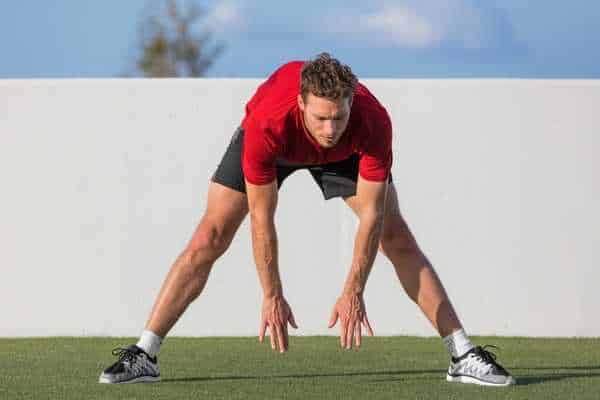
Strength Training for Lower Body Muscles
When it comes to getting a bigger butt, there are two things you need:
1. A solid workout routine with power training that targets the glutes.
2. The right diet.
If you want to build muscle mass and not just bulk up, you’ll want to focus on compound lifts like squats, deadlifts, and lunges—the same moves that work your upper body.
That’s because these exercises use multiple muscle groups at once, which means they’ll help with muscle building in places like your back and legs. These are the strongest muscle fibers in your whole body.
And since your gluteal muscles are made up of several different muscles that help move your leg forward when you walk or run, this kind of exercise will give them a serious boost too!
You’ll also want to eat enough protein every day (think 1 gram per pound of body weight) so that your muscles can repair themselves after each workout session.
You might even need to bump up that number if you’re lifting heavy weights or going for longer periods of time without eating enough calories throughout the day.
Running With Increased Weight For A Bigger Butt
Running With Increased Weight For A Bigger Butt
We all know that running is a great way to get in shape and lose weight, but did you know that it can also help you get a bigger butt?
Yes, it’s true!
Running with increased weight for a bigger butt is an easy way to achieve your goals—and it’s something anyone can do. All you need is a weighted vest and some motivation.
When you wear a weighted vest while you run, the extra weight will cause your muscles to work harder than normal. This means that your legs will grow stronger and more muscular over time—and this translates into bigger muscles in your butt area as well.
The more muscle mass you have in this area, the larger it will look when viewed from behind.
Remember, if it is bubble butts you are after, be sure to specifically target short bursts or short sprints in your fitness routine.
FAQs
What happens to my muscles when I start running regularly?
When I started running in my 50s, I noticed my leg muscles becoming firmer within just a few weeks. Running works your calves, quads, hamstrings, and glutes with each stride. Your body adapts by building more muscle fibers and increasing endurance. For beginners over 50, these changes might happen slowly, but they’re happening! Even running just 20 minutes three times weekly will strengthen your muscles. Your core also gets stronger as it works to keep you balanced during your run.
Can running actually strengthen my bones and joints?
Yes! Running is a weight-bearing exercise that actually makes bones stronger, not weaker. Each time your foot strikes the ground, it sends a signal to your bones to maintain or increase their density. This is especially important for women over 50 who face higher osteoporosis risks. Contrary to old myths, research shows moderate running doesn’t cause knee arthritis in healthy joints. The key is proper shoes, good form, and starting slowly. Your joints actually adapt and get stronger with regular, appropriate running.
How does running impact my heart health over time?
Running creates amazing changes in your heart. After just a few months of consistent running, your resting heart rate drops as your heart becomes more efficient. Your heart literally grows stronger, pumping more blood with each beat. Running helps lower blood pressure and improves cholesterol levels too. For those of us over 50, these benefits are crucial. Studies show runners have a 30-45% reduced risk of cardiovascular disease. Even running just 5-10 minutes daily can add years to your life!
How does running shape and tone my buttocks?
Running is fantastic for sculpting your buttocks! When you run, especially uphill or at higher intensities, your gluteal muscles (buttocks) work hard to propel you forward. This creates that lifted, toned appearance many runners develop. For the best butt-toning results, I mix in hill sprints and stair climbs with my regular runs. The incline forces your glutes to work even harder. After about 8-12 weeks of consistent running, you’ll likely notice more definition and firmness in your buttocks. Many of my readers over 50 report feeling more confident in their jeans after taking up running!
What changes might I notice in my mental health when I become a runner?
The mental health benefits of running might surprise you even more than the physical ones! Within minutes of starting a run, your brain releases endorphins – those famous “feel-good” chemicals that create a natural high. Regular runners report less anxiety, better stress management, and fewer symptoms of depression. Running outdoors in natural settings amplifies these benefits. Many of my 50+ readers tell me they sleep better after running and have more mental clarity throughout the day. For me personally, running became a form of moving meditation that helps me process thoughts and boost creativity.
Conclusion
When it comes to running, your exercise routine may determine whether your glutes actually grow bigger or smaller. That’s because “butt exercises” target and tone your glutes, just as weight-lifting does for the rest of your body.
When you’re running consistently, most runners’ glute muscles do shrink because you’re actually putting less stress on them with every step you take, right?
So the obvious conclusion is that if you do run and tone your butt, chances are ninety-nine percent that it won’t ever be any bigger (let alone a lot bigger).

Rick Huey is a fitness writer who has dedicated his life to living an active lifestyle. With more than 30 years of experience in the fitness industry, Rick is a respected contributor for FitFab50.com, where he shares his wealth of knowledge with a wide audience. His dedication to promoting the benefits of living an active lifestyle has inspired many people to pursue their own fitness journeys with enthusiasm and dedication.
